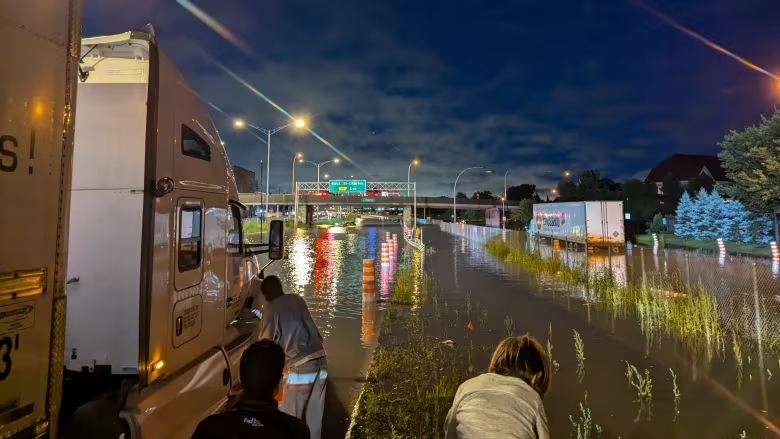Title: Montreal’s Hidden Rivers Resurface Amid Recent Flooding
Recent severe rainfall in Montreal has revealed the hidden presence of old rivers beneath the city, underscoring the vulnerability of urban areas to extreme weather events. During the unprecedented downpour on August 9th, which saw up to 158 millimeters of rain in some parts of the city, many areas experienced significant flooding, including Highway 40 in Kirkland, where drivers like James Murchison found themselves stranded for hours.
As Murchison and others were trapped by the rising water, the geography of the area became a subject of curiosity. Upon investigating, Murchison discovered that they were situated above a buried river, a relic of Montreal’s past when small streams and rivers were confined to underground tunnels as the city developed.
This incident highlights a growing concern as urban planners and scientists turn to historical maps to understand how these hidden waterways contribute to modern-day flooding. Montreal, like many other Canadian cities, was built over an intricate network of rivers and streams that have been redirected and confined to sewer systems. These systems are now under increasing strain as climate change brings more frequent and intense rainfall.
In response to the flooding, Montreal’s Mayor Valérie Plante defended the city’s efforts to modernize its infrastructure. She pointed to ongoing initiatives such as the construction of sponge parks, the expansion of green spaces, and the planting of more trees, all aimed at improving the city’s ability to absorb rainwater. However, Plante acknowledged that while these measures are critical, they cannot entirely eliminate the risk of flooding.
Local businesses have also felt the impact of Montreal’s buried rivers. In the Lachine area, for example, businesses near the St. Pierre River, one of the city’s most famous hidden waterways, have faced recurring flooding. Despite significant investments in flood prevention measures, some businesses continue to struggle with water damage during heavy rains.
As cities like Montreal continue to grapple with the challenges posed by hidden rivers and climate change, experts suggest that a blend of modern technology and historical knowledge could help mitigate future risks. Urban planners are now considering innovative materials and designs, such as porous asphalt, to better manage water runoff in low-lying areas.
The recent events serve as a stark reminder of the city’s hydrological history and the importance of planning for a future where extreme weather is becoming the norm. As Montreal works to adapt, the city’s hidden rivers may yet play a crucial role in shaping its resilience against climate change.

